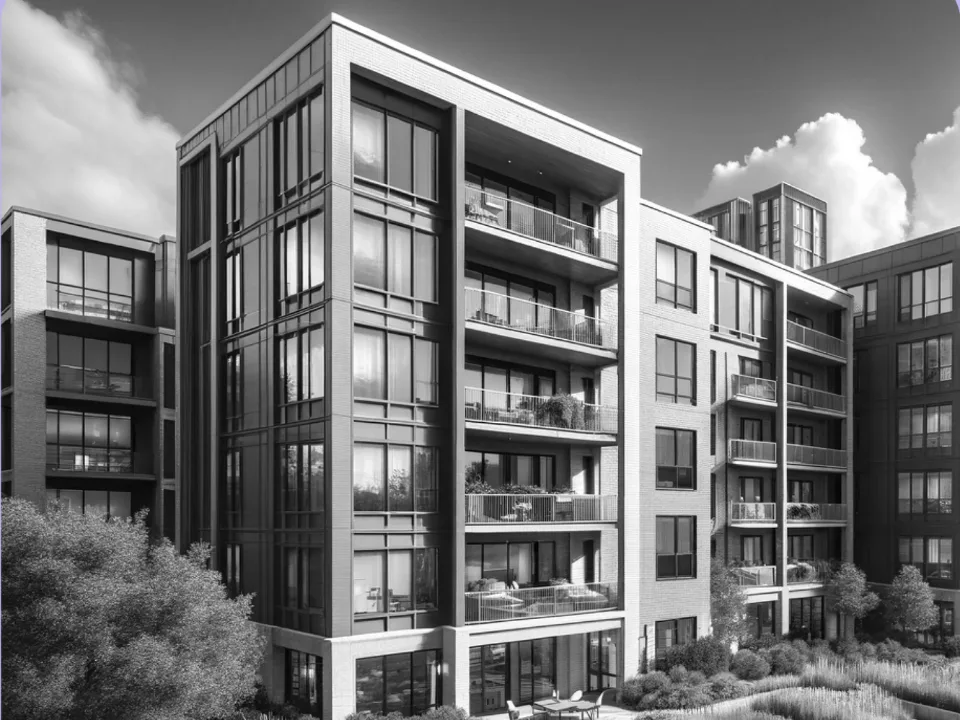Navigating the Property Market Downturn in Five Charts
The U.S. commercial property market has undergone a notable 16% reduction in prices since its peak in March 2022. With eager investors amassing a massive $205.5 billion, awaiting the right opportunity, discerning the ideal time to buy has become paramount.
Together with
Good morning. With a record amount of dry powder on the sidelines, investors are eyeing opportunities in the current property market slump. Blackstone (BX) successfully avoided foreclosure by selling a majority stake in 11 struggling Manhattan properties. Meanwhile, the Fed’s rate hikes are trickling down to the once-invincible industrial market.
Today’s issue is brought to you by AirGarage. Helping parking lot/garage owners improve operational efficiency and increase revenue.
👋 First time reading? Sign up here
Market Snapshot
|
|
||||
|
|
*Data as of 8/30/2023 market close.
RECOVERY SIGNALS
How to Navigate and Capitalize on the Property Market Downturn in Five Charts
A record $205.5B in dry powder is sitting on the sidelines for CRE, awaiting the right opportunity. Savvy investors who capitalized on real estate bargains after the 2008 crisis should keep an eye on these five trends.
Decline in US property prices: US CRE prices have dropped by an average of 16% since their March 2022 peak, with offices being hardest hit, losing 31% of their value due to remote work. E-commerce warehouses, on the other hand, have only seen an 8% decrease in value. Multifamily has fallen by around 20%, offering potential bargains for investors as owners grapple with debt repayment challenges.

Source: WSJ
The bid-ask gap: Sellers are still clinging to outdated price expectations, leading to a bid-ask spread. It’s particularly wide for multifamily apartments, reaching 11% (the highest it’s been since 2012). Office and retail show a narrower spread of 8%, while industrial warehouses see a mere 2% difference in expectations. The spreads are contributing to a 64% drop in US CRE investment compared to last year. Closing the gap might take some time despite the slowdown anticipated to be shorter than the post-2008 recovery.

Source: WSJ
Factors leading to price cuts: The number of distressed properties will be pivotal for bargain hunters. While forced sales remain uncommon, the value of US distressed property assets has risen, totaling $71.8B. This figure could increase as loans mature and owners confront refinancing challenges.

Source: WSJ
Corporate bond yields suggest further declines: Drawing parallels between commercial property and corporate bonds, the yield difference has typically been 1.9 percentage points more for real estate over investment-grade corporate debt for the past two decades. Currently, this premium is only 1.3 percentage points, as noted by Green Street’s Cedrik Lachance. To regain equilibrium, U.S. property prices may need to drop an additional 10% to 15%.

Source: WSJ
Property market outlook from stocks POV: U.S. real estate stocks trade at a 10% discount to their gross asset values, hinting at possible further drops in private property prices. Rich Hill of Cohen & Steers notes that these stocks often predict private market trends. With REITs recently showing a three-quarter rise, the private market could see stabilization in the next 6-12 months.

Source: WSJ
➥ THE TAKEAWAY
Big picture: As the winds of the CRE market continue to shift, the compass for investors seems clear: public markets (e.g. real estate stocks and REITs) currently offer the most promise today, while direct investments in physical properties might require more patience and strategic timing. But when market stability returns, price tags resonate with buyer sentiment, and distressed sale opportunities surface, the time will be ripe to capitalize on potential deals.
TOGETHER WITH AIRGARAGE
How This Parking Lot Increased Revenue by 44%
Airlines charge more for popular flights and less for unpopular ones. Hotels increase rates when rooms are in high demand and decrease them when things are quiet.
It’s time for this simple concept to finally be applied to the parking industry.
AirGarage took over this parking lot in Charleston and increased revenue by 44% despite traffic levels staying constant year-over-year.
AirGarage has built its own technology and data stack from the ground up to manage and monetize parking lots, which is what enables sophisticated pricing experimentation and optimization for the first time.
When drivers enter the parking lot, each one can be shown a different “experimental” rate, and then their downstream behaviors can be measured to determine the optimal price for that location in real time.
And when the lot starts to fill up, parking rates automatically increase to maximize the revenue collected.
The results speak for themselves.
Is your parking lot or parking garage’s pricing still only being updated once or twice per year?
If so, you’re leaving revenue on the table.
Get in touch with AirGarage to learn how pricing optimization can boost your parking facility’s revenue too.
*Disclosure: This post contains sponsored content.
CRISIS AVERTED
Blackstone Sells NYC Multifamily Properties to Avoid Foreclosure

From left: Blackstone’s Stephen Schwarzman, Atlas Capital Group’s Jeffrey Goldberger and 250 West 19th Street (Getty, Atlas Capital Group, Blackstone, Google Maps)
Blackstone (BX) successfully sidestepped a looming foreclosure by selling a majority stake in 11 struggling Manhattan properties to Atlas Capital Group for $142.4M, which included taking over $90M in mezzanine debt.
To the rescue: Blackstone’s $270M senior loan faced troubles after being downgraded due to insufficient cash flow to cover debt payments, raising the risk of default. The Atlas acquisition has alleviated these concerns, effectively resolving the potential default risk. Blackstone confirmed that the mezzanine loan has been paid off, and the senior debt is no longer in special servicing.
Valuation decline: The sale sheds light on the portfolio’s diminished value, with estimates suggesting a 43% decrease in valuation since Blackstone’s original purchase in 2015. The $142M price tag for a 51% stake points to a valuation of around $278M, down from the initial $487M.
Multifamily impact: The decline in the portfolio’s value underscores the broader trend of falling multifamily property valuations attributed to the rise in interest rates. Brokers have observed declines of up to 20% in multifamily valuations due to these conditions.
➥ THE TAKEAWAY
Fight another day: Atlas Capital’s decision to buy the entity tied to the mezzanine debt suggests a strategic move to acquire controlling ownership where the portfolio’s value is projected to stabilize. By taking on the mezzanine debt and securing the properties, Atlas is positioning itself to manage and restore value in a challenging market impacted by interest rate increases.
🌐 AROUND THE WEB
📖 Read: The bankruptcy of Legacy Park in Mesa, AZ, a sports arena built with municipal bonds, highlights the risks associated with conduit issuers in the municipal bond market, where private-sector businesses borrow tax-free for projects.
▶️ Watch: On this segment of CNBC’s The Exchange, Robert Shiller, co-founder of the Case-Shiller Index, reports that despite rate hikes, the index shows no annual change in home prices. He also discusses housing supply pressures, future price estimates, and regulatory impacts on the secondary home rental market.
🎧 Listen: On this episode of CBRE’s The Weekly Take, retired military officers discuss leveraging veterans to address labor shortages with programs like SkillBridge and Hiring Our Heroes, highlighting the transition process and valuable skills veterans bring to civilian careers.
INDUSTRIAL SLOWDOWN
Interest Rate Hikes Finally Hit The Brakes on Industrial Growth

A ROBOT SORTS AND STACKS BINS AT AMAZON FULFILLMENT CENTER IN EASTVALE, CA (GETTY)
The US industrial real estate market is finally feeling a bit sluggish after endless rate hikes over the last 18 months, resulting in a slowdown in new construction, investment sales, and leasing activity.
Impact of rate hikes: In the last 18 months, interest rate increases by the Federal Reserve have significantly slowed new construction and stabilized both investment sales and leasing activities. Compared to the combined starts of approximately 1.2BSF in 2021 and 2022, this year has seen only a commencement of 178MSF, reflecting a marked decrease in new projects. Additionally, there’s been a drop in national industrial asset sales.
Performance and rent growth: Despite the challenges, the industrial real estate sector remains strong. Rent growth has been steady, with national in-place rents for industrial spaces increasing 7.5% year-over-year. Furthermore, rents in various regions, especially in coastal markets, have risen, with some areas recording substantial hikes.
Market hotspots: Coastal regions like Orange County and Los Angeles are among the highest in terms of rent per square foot. Other notable markets include Miami and New Jersey. Investment sales are also noteworthy in California’s regions, particularly Southern California’s Inland Empire, Los Angeles, and the Bay Area.
➥ THE TAKEAWAY
Looking ahead: Despite the current challenges, the enduring strength of the industrial real estate market shines through. With low vacancy rates and adaptability to shifting economic terrains, there’s optimism for a revival. As inflation finds its balance and interest rates decrease, the market’s desire for development and sales is poised to bounce back, albeit potentially not reaching the peaks seen during the pandemic era.
✍️ DAILY PICKS
-
Luxury living: Manhattan emerges as the costliest residential hub in the US once again, dominating the list of high-cost living metros due to exorbitant housing rates and lavish amenities.
-
REIT Renaissance: In the midst of REIT share price declines, investment firm Cohen & Steers suggests that now might be a good time to invest in publicly traded REITs.
-
Hidden endorsements: Real estate investment firm Fundrise reached a settlement with the SEC after paying $8M to influencers without proper disclosure for promoting its platform.
-
Sorry, not sorry: Amazon (AMZN) CEO Andy Jassy insists employees must come to the office 3 days a week or risk losing their jobs.
-
Innovative solutions: Cities worldwide creatively address complex challenges by using imaginative solutions to reshape urban environments and improve quality of life.
-
REIT wrongdoings: Private hotel REIT Legendary Capital was ordered to pay $5M by the SEC for misusing investor funds to cover corporate expenses in violation of its offering memoranda.
-
Treasury tightrope: Rising 10-year Treasury yields hit their highest levels since 2007, which could lead to more CRE financing challenges, asset value drops, and higher cap rates.
-
Cardone’s class action: Grant Cardone has been around the block long enough to amass a $4B residential real estate portfolio. But a class-action lawsuit alleges he misled his investors and potentially destabilized the housing market.
-
Surprising surge: Private equity giants upped allocations to real estate by 76 bps, with sovereign wealth funds boosting their commitments in 1H23, resulting in $3.73B across the top 15 private investment commitments to real estate funds.
-
Banking safeguard: US regulators plan to enforce new rules requiring regional banks with over $100B in assets to hold additional long-term debt to absorb potential losses.
-
Value slash: Manulife US REIT downgraded its Irvine office tower’s value by 26% to $256M in preparation for a potential sale.
-
Faulty loan fallout: The FDIC is suing Pulte Mortgage, a subsidiary of PulteGroup, for allegedly selling “defective loans” from the collapse of WaMu into RMBS trusts 15 years after the bank’s failure.
📈 CHART OF THE DAY

US industrial production rose 1% in July, recovering from pandemic-related disruptions, with growth seen in manufacturing output, particularly in motor vehicles, utilities, mining, industrial machinery, and electronics. Some sectors, like electrical equipment and appliances, experienced declines. Meanwhile, factory capacity utilization improved, signaling progress in supply chain recovery.
What did you think of today’s newsletter? |
📣 HIT THE INBOX OF 65K+ CRE PROFESSIONALS
Advertise with CRE Daily to get your brand in front of the Who’s Who of commercial real estate. Subscribers are high-income decision makers, investors, and C-suite executives. For more information, please email [email protected].




















